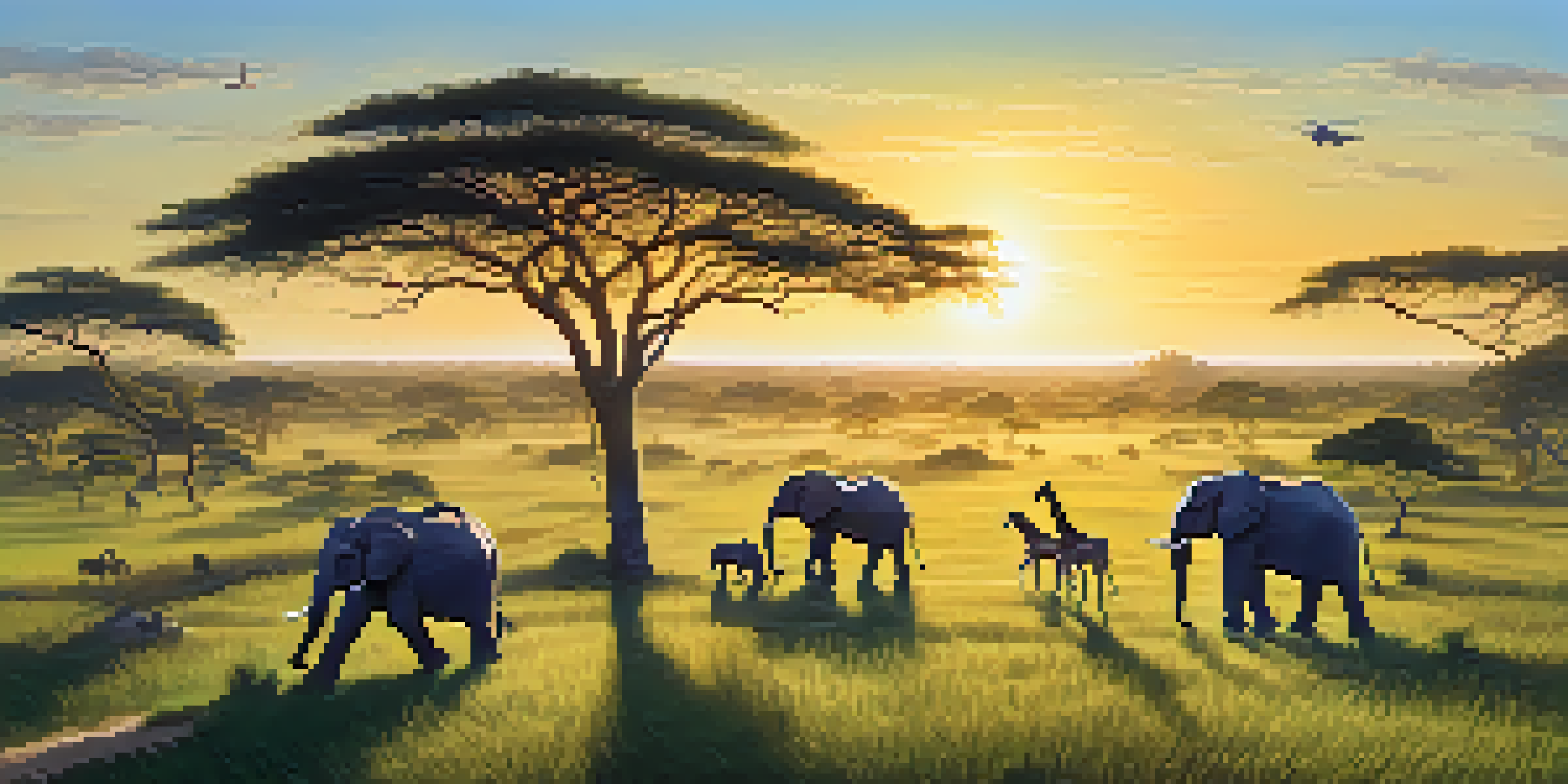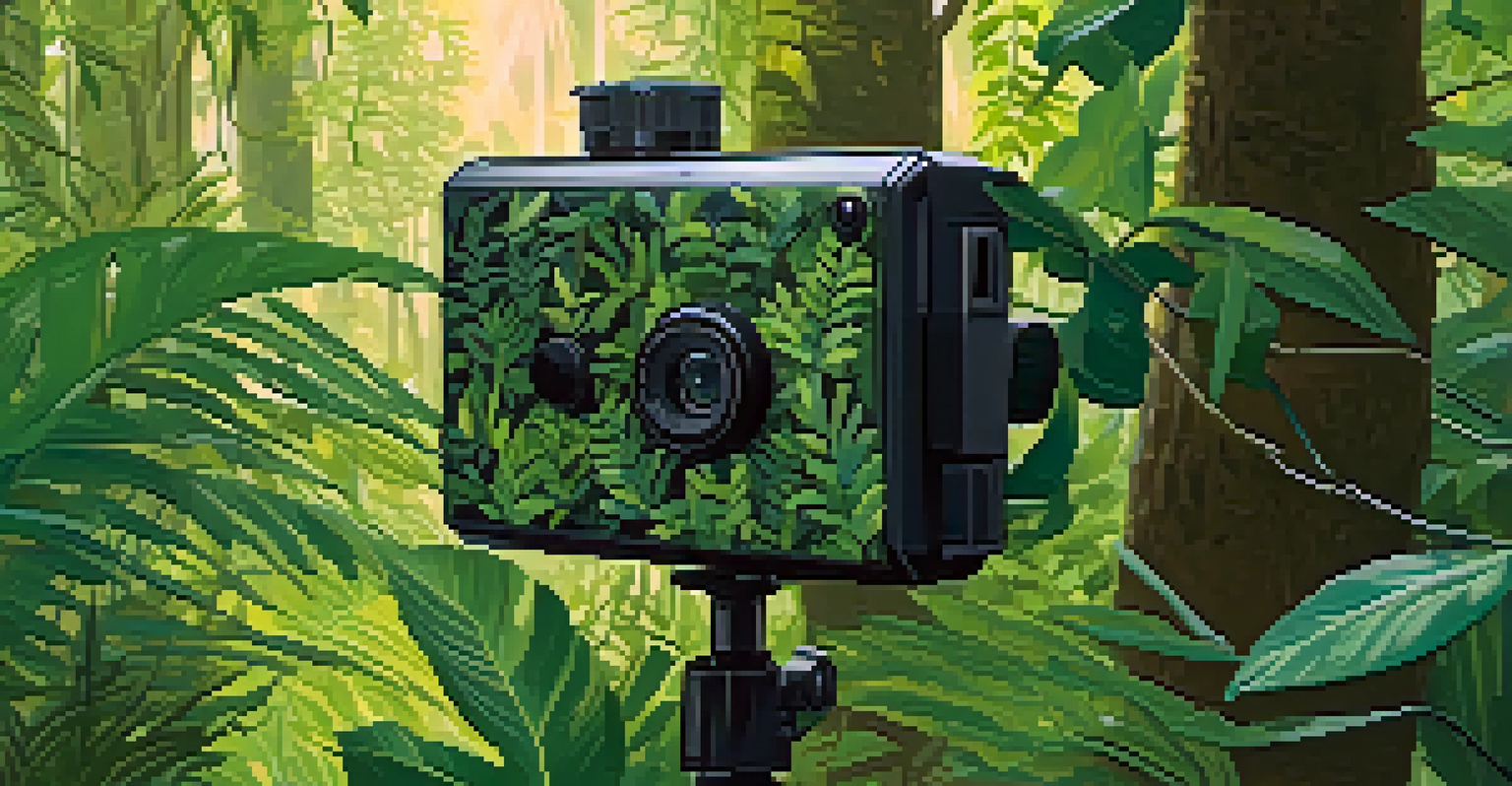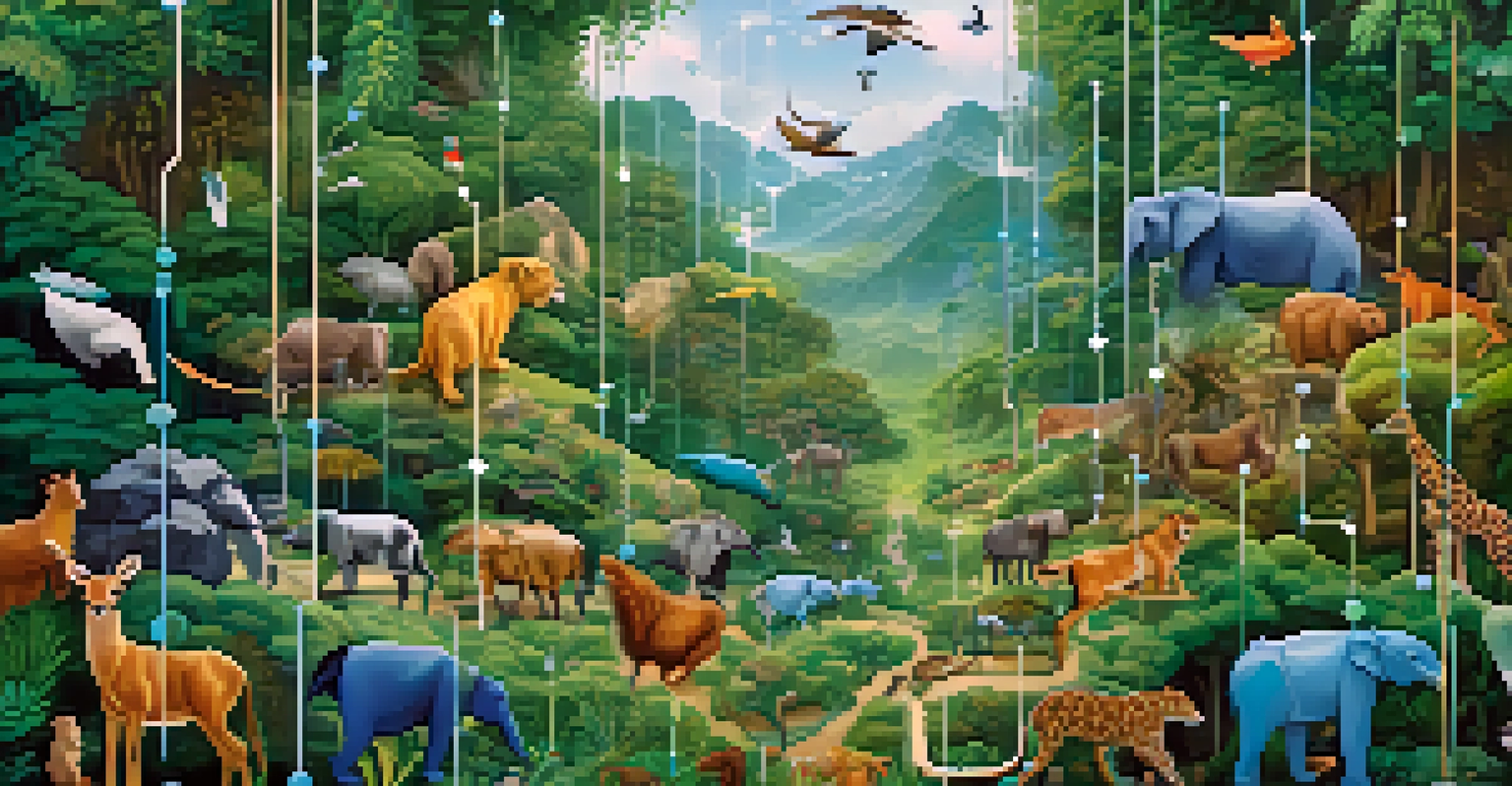Innovative Technologies Used in Wildlife Conservation Efforts

Drones Revolutionizing Wildlife Monitoring and Protection
Drones have taken wildlife conservation to new heights, quite literally. By providing aerial views of vast landscapes, these unmanned aerial vehicles help conservationists monitor animal populations and track their movements without disturbing their natural habitats. Imagine being able to survey hundreds of miles of jungle or savannah in hours instead of days.
The future will be shaped by our ability to embrace innovative technologies that enhance our understanding and protection of the natural world.
Using drones equipped with high-resolution cameras, researchers can capture stunning images and videos, allowing them to gather data on wildlife behavior and habitat use more efficiently. This technology not only saves time but also reduces the human footprint on sensitive ecosystems. Just think of it as having a bird's-eye view of wildlife without the noise and disruption of traditional methods.
Moreover, drones can assist in anti-poaching efforts by providing real-time surveillance of protected areas. This innovative approach allows rangers to respond quickly to threats, making it harder for poachers to operate undetected. In this way, drones are not just tools but vital allies in the fight to protect endangered species.
Camera Traps: Capturing the Secret Lives of Animals
Camera traps are like stealthy little eyes in the wild, capturing images of animals in their natural habitats without the need for human presence. These motion-activated cameras can be placed in strategic locations to monitor everything from large mammals to elusive nocturnal species. It's fascinating to see how these devices unveil the hidden behaviors of wildlife that we might never observe otherwise.

The data collected from camera traps provides invaluable insights into animal populations, movements, and interactions. For example, researchers can identify individual animals through unique markings and track their health over time. This information is crucial for developing effective conservation strategies and managing wildlife reserves.
Drones Enhance Wildlife Monitoring
Drones provide aerial views that help conservationists monitor animal populations while minimizing disturbance to their habitats.
Additionally, camera traps have become a powerful tool for raising awareness about wildlife conservation. The captivating images they capture often make their way to social media, engaging the public and inspiring action to protect these animals. It's amazing how a simple photo can connect people to the wilderness and ignite a passion for conservation.
Biotechnology: Genetic Solutions for Wildlife Conservation
Biotechnology is opening up exciting avenues for wildlife conservation, particularly through genetic research. Techniques like DNA barcoding allow scientists to identify species and understand their genetic diversity, which is essential for conservation planning. By examining the genetic makeup of populations, researchers can determine their vulnerability to extinction and devise strategies to protect them.
Technology is nothing. What’s important is that you have a faith in people, that they’re basically good and smart, and if you give them tools, they’ll do wonderful things with them.
One innovative application of biotechnology is the use of genetic rescue, where scientists introduce individuals from healthy populations to those facing inbreeding depression. This can help bolster genetic diversity and improve the chances of survival for endangered species. Imagine giving a struggling population a fresh start by mixing in new genes, much like revitalizing a plant with fresh soil.
Moreover, advancements in reproductive technologies, such as artificial insemination and cloning, are being explored to save species on the brink of extinction. While these methods raise ethical questions, they also offer hope for preserving biodiversity. The intersection of technology and conservation is a complex yet promising frontier that could redefine our approach to protecting wildlife.
Satellite Technology: Tracking Wildlife from Space
Satellite technology has become a game-changer in wildlife conservation, allowing researchers to monitor animal movements on a global scale. By equipping animals with GPS collars or transmitters, conservationists can track their locations and behaviors over vast distances. This information is invaluable for understanding migration patterns and habitat use, especially for species that traverse national borders.
For instance, tracking elephants or whales from space provides insights into their migratory routes and helps identify critical habitats that need protection. This data-driven approach enables better management of wildlife corridors and conservation areas. Just picture being able to visualize the movements of a herd of elephants across multiple countries, making it clear how interconnected their habitats truly are.
AI Streamlines Conservation Efforts
Artificial intelligence helps researchers analyze vast data sets quickly, enabling more efficient decision-making in wildlife conservation.
Moreover, satellite imagery can be used to monitor environmental changes, such as deforestation or habitat degradation, which directly impact wildlife. By combining satellite data with ground-level observations, conservationists can create a comprehensive picture of the challenges facing wildlife and devise effective interventions. In essence, satellite technology allows us to see the big picture, making it easier to protect the world's precious biodiversity.
Mobile Applications: Empowering Local Conservation Efforts
Mobile applications are empowering communities and conservationists alike to take an active role in protecting wildlife. With the rise of smartphone technology, individuals can report sightings of endangered species, document illegal activities, or even participate in citizen science projects—all from the palm of their hand. This grassroots approach fosters a sense of ownership and responsibility for local ecosystems.
For example, apps like iNaturalist encourage users to record and share their observations of plants and animals. This data contributes to scientific research while also helping individuals learn more about their local wildlife. It's like having a field guide in your pocket, making nature more accessible and engaging for everyone.
Furthermore, these mobile tools can aid in real-time communication between conservationists and local communities, facilitating rapid responses to threats such as poaching or habitat destruction. By harnessing technology, we can build a network of informed citizens dedicated to wildlife conservation. The power of a community united by a common goal can be transformative, leading to more effective conservation outcomes.
Artificial Intelligence: Analyzing Data for Better Decisions
Artificial intelligence (AI) is becoming increasingly integral to wildlife conservation, helping researchers analyze vast amounts of data quickly and accurately. From identifying species in camera trap images to predicting animal movements, AI algorithms can process information at speeds that far exceed human capabilities. This technology allows conservationists to make data-driven decisions more efficiently.
For instance, AI can sift through thousands of photographs from camera traps to identify and classify animals, saving researchers countless hours of manual work. Imagine a computer program that can learn to recognize specific species based on patterns in images—it's like having a digital assistant that never tires. This efficiency is crucial in a field where time and resources are often limited.
Blockchain Ensures Ethical Trade
Blockchain technology promotes transparency in wildlife trade, helping to reduce illegal poaching and ensuring ethical sourcing of animal products.
Moreover, AI can be utilized to model potential outcomes of conservation strategies, helping organizations allocate resources effectively. By simulating various scenarios, conservationists can identify the most effective approaches to protect endangered species. In this way, AI acts as a powerful ally in the quest to save our planet's wildlife, turning complex data into actionable insights.
Blockchain: Ensuring Transparency in Wildlife Trade
Blockchain technology is making waves in wildlife conservation by promoting transparency and accountability in the trade of animal products. This decentralized ledger system allows for secure tracking of wildlife products, ensuring that they are sourced ethically. Imagine a world where every transaction involving wildlife can be traced back to its origin—this could significantly reduce illegal poaching and trafficking.
Organizations can use blockchain to certify the legality of wildlife products, making it easier for consumers to make informed choices. For example, if a piece of jewelry is made from an endangered species, blockchain can provide proof of its origin, helping consumers avoid supporting illegal wildlife trade. This technology empowers individuals to play a role in protecting endangered species through their purchasing decisions.

Furthermore, blockchain can facilitate collaboration among various stakeholders, including governments, NGOs, and businesses, by creating a shared platform for information exchange. This collective effort can lead to more effective conservation strategies and stronger regulations against wildlife crime. As we embrace innovative technologies like blockchain, we move closer to a future where wildlife trade is conducted ethically and sustainably.
The Future of Wildlife Conservation: Embracing Technology
The future of wildlife conservation lies in our ability to embrace innovative technologies that enhance our understanding and protection of the natural world. From drones and camera traps to AI and blockchain, these tools offer unprecedented opportunities to safeguard biodiversity. As we harness the power of technology, we can work smarter, not harder, in our conservation efforts.
However, it's essential to remember that technology alone cannot solve the challenges facing wildlife. Strong community engagement, education, and policy support are equally vital in creating a sustainable future for our planet's diverse species. By combining technological advancements with grassroots initiatives, we can create a holistic approach to conservation that benefits both wildlife and communities.
Ultimately, the intersection of technology and wildlife conservation is a thrilling frontier, full of potential and promise. As we look to the future, let us be inspired by the possibilities that lie ahead and commit ourselves to protecting the incredible biodiversity that shares our planet. Together, we can ensure that future generations inherit a world rich in wildlife and natural beauty.